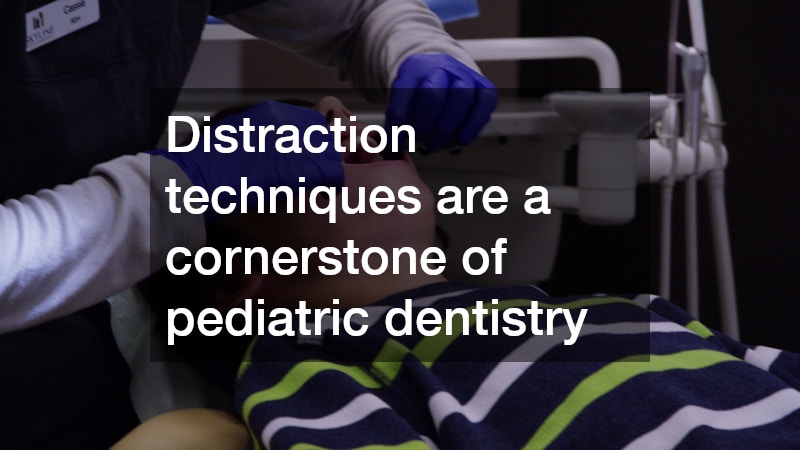There are various strategies and techniques that pediatric dentist offices utilize to keep children calm during dental visits, ensuring a positive experience for both the child and the parent. Visiting the dentist can often be a source of anxiety for children, but pediatric dentists are specially trained to manage this fear.
The key to a successful visit lies in creating a friendly environment and utilizing various techniques that alleviate discomfort. Delve into multiple aspects that help children remain calm during dental procedures.
As we explore these strategies, parents will gain insight into how they can further support their children.
Understanding these strategies is vital for parents preparing their kids for their dental appointments. A positive dental experience can lead to better oral health in the long run and instill lifelong habits.
Creating a Child-Friendly Environment
Creating a welcoming and colorful atmosphere is paramount in making a pediatric dental office a friendly space for children. The use of child-friendly decor, such as cartoon characters and bright colors, can significantly diminish anxiety. A warm and inviting reception area with toys can instantly make children feel more at ease.
Additionally, pediatric dentists often design treatment rooms with a playful theme that engages a child’s imagination. The inclusion of interactive elements, such as murals or games, keeps kids entertained while they wait. This type of environment can reduce fear by making dental visits seem less intimidating.
Furthermore, having staff trained specifically in child interaction enhances the experience for young patients. Friendly dental assistants and hygienists contribute to a comforting atmosphere that reassures children during their visits.
Using Distraction Techniques
Distraction techniques are a cornerstone of pediatric dentistry, allowing children to focus on something other than the dental procedures. Dentists often provide toys or handheld devices for children to engage with during their appointments. This helps shift their attention away from any discomfort or fear they may be feeling.
Moreover, many dental offices incorporate screens displaying cartoons or educational videos, which can effectively help children stay calm. The use of interactive games can not only distract children but also make the appointment feel more fun and less clinical. Engaging children in such activities can create a more positive association with the visit.
Additionally, some pediatric dentists utilize music therapy or audiobooks to maintain a calming environment. This auditory distraction has been shown to reduce anxiety levels during dental procedures, making the overall experience much smoother for young patients.
Incorporating Parental Involvement
Parental involvement is crucial in helping children navigate their dental visits. Parents can model positive behavior by demonstrating calmness and confidence, which their children often mimic. Open communication about what to expect can also work wonders in alleviating anxiety before the appointment.
It is beneficial for parents to discuss the dentist’s role in a way that emphasizes care rather than fear. Preparing children with simple and accurate explanations about dental procedures can help demystify the experience. Supportive words can instill a sense of security and encourage bravery on the part of the child.
Furthermore, parents must engage in healthy conversations about dental hygiene practices at home. Reinforcing positive dental care habits ensures that children view dental visits as a part of their overall health rather than as a scary obligation. This mental preparation helps ease the transition into the office setting.
Adding Positive Reinforcement
Positive reinforcement plays a significant role in pediatric dentistry, as it helps children associate dental visits with rewards and encouragement. Dentists often employ reward systems that offer small prizes or stickers for bravery during the appointment. This practice promotes a sense of achievement in children and makes them more likely to return confidently in the future.
Additionally, verbal praise from dental professionals can significantly boost a child’s confidence during the visit. Compliments on bravery and cooperation help instill a positive association with the experience. Recognizing a child’s efforts can transform dental anxiety into a rewarding experience.
Moreover, celebrating small milestones, such as sitting still or opening their mouth, reinforces desired behaviors. By focusing on positive outcomes, children can learn that their actions result in praise and encouragement, laying the groundwork for positive experiences in healthcare settings.
Communicating Effectively
Effective communication is essential in pediatric dentistry, as it helps to convey important information in a child-friendly manner. Pediatric dentists often use simple, age-appropriate language to discuss procedures, which allows children to understand without amplifying fear. This accessible communication fosters trust and openness between the dentist and the young patient.
Additionally, the use of analogies and playful terms helps demystify dental tools and procedures. By calling a drill a “tooth tickler,” dentists can lessen the fear associated with the sound and sensation. Adapting vocabulary to suit a child’s level of understanding can significantly aid in reducing anxiety.
Furthermore, dentists are trained to observe children’s non-verbal cues, which are essential in gauging comfort levels during treatment. By adjusting their approach based on these signals, pediatric dentists can create a more tailored experience for each child, ensuring they feel safe and secure throughout their visit.
The various strategies employed by pediatric dentist offices play a crucial role in ensuring that children feel safe and calm during dental visits, making for a smoother experience that benefits both children and their families. By creating welcoming environments, utilizing distraction techniques, encouraging parental involvement, and employing effective communication strategies, pediatric dentists help children navigate their appointments with confidence.
These approaches not only ease anxiety but also foster a sense of trust and cooperation, paving the way for positive dental experiences that can last a lifetime. As children learn to associate the dentist’s office with safety, care, and rewards, the importance of oral health becomes a natural part of their lives.
By understanding and implementing these strategies, parents can better prepare their children for appointments and make the process less daunting. Ultimately, a supportive dental environment promotes healthy habits and helps children maintain their oral health with ease.

